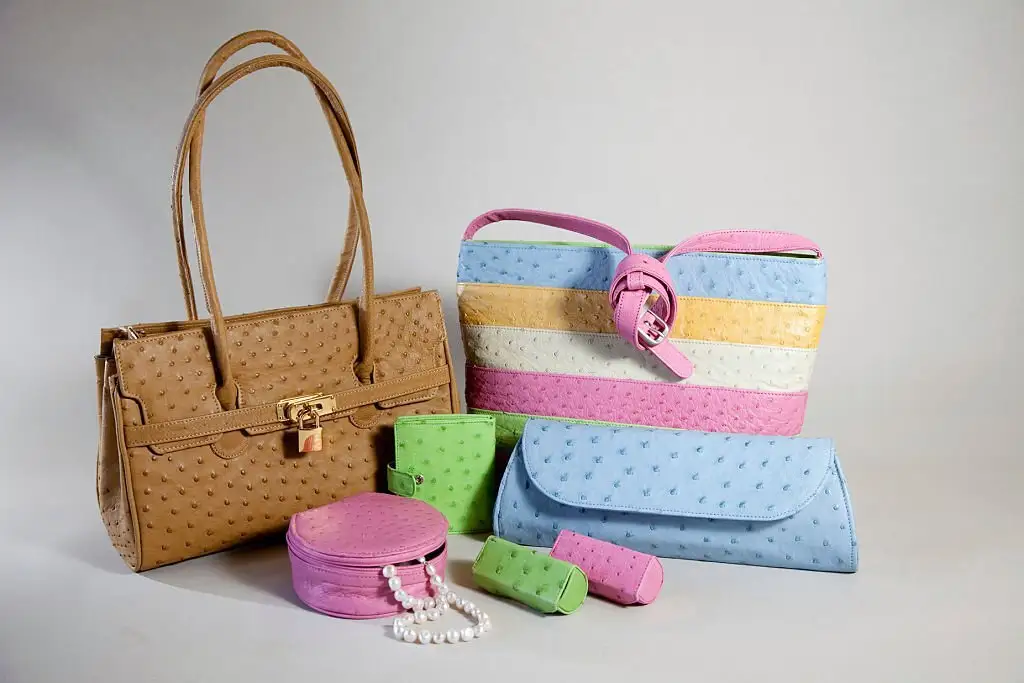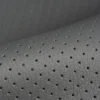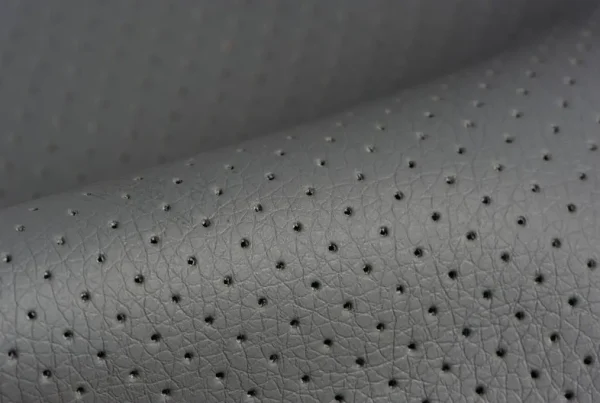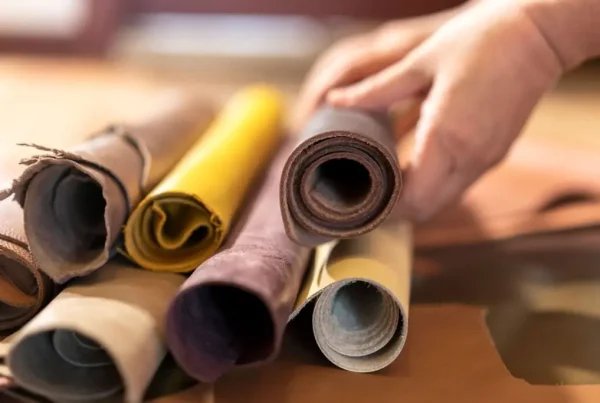Welcome to the world of ostrich leather, a material that has captured the imagination of fashion enthusiasts worldwide. This exotic leather is known for its unique appeal and undeniable popularity in the fashion industry, is a fascinating subject of exploration.
History of Ostrich Leather
Delving into the annals of history, ostrich hide has a captivating origin story. It dates back to ancient times when it was a symbol of prestige and luxury. Over the centuries, this exotic leather has evolved into a symbol of opulence, establishing itself as a sought-after luxury material.
Characteristics of Ostrich Leather
The allure of ostrich hide lies in its remarkable characteristics. This exquisite material boasts a texture that is both supple and exotic, setting it apart from the ordinary. The defining feature of this leather is its distinctive pattern, characterized by raised quill follicles, creating a captivating visual and tactile experience. The color variations, ranging from rich browns to deep blacks, further enhance its appeal.
Ostrich hide, with its unique and luxurious qualities, has become a staple in the world of high-end fashion and craftsmanship.

Pros of Ostrich Leather
When it comes to the benefits of opting for ostrich leather, there are several compelling reasons to consider:
Exceptional Durability:
This leather is renowned for its outstanding durability. It can withstand the test of time, making it a wise investment for long-lasting fashion pieces.
Irresistible Softness:
Ostrich hide’s hallmark is its luxurious softness. With a tactile sensation that is second to none, it provides a comfortable and indulgent experience when worn.
Luxurious Appearance:
The use of this leather instantly elevates any fashion item. Its unique pattern and natural luster lend an air of opulence and sophistication to accessories and clothing.
Cons of Ostrich Leather
While ostrich hide boasts numerous advantages, it’s essential to be aware of potential drawbacks:
Higher Price Tag:
One of the primary cons of this leather is its cost. It’s considered a luxury material, which means it comes with a premium price. However, for those who value quality and style, it can be a worthwhile investment.
Limited Availability:
Ostrich hide is not as readily available as other types of leather. This limited availability can sometimes make it challenging to find the specific leather of ostrich product you desire.
Despite these drawbacks, many individuals are drawn to the allure of ostrich hide for its unique blend of durability, softness, and luxurious aesthetics.
Production Statistics of Ostrich Leather
Let’s delve into the world of ostrich leather production, shedding light on the demand and supply dynamics:
Globally, the production of ostrich hide has been steadily increasing in recent years. In 2020, the global production of this exotic leather reached approximately 50,000 skins. This upward trend can be attributed to the growing demand for luxury fashion items and accessories.
The demand for it is primarily driven by its unique characteristics and exclusivity. Fashion houses and designers covet ostrich hide for its softness, durability, and distinct pattern. This demand, coupled with limited availability, has led to a competitive market, resulting in higher prices.
Ostrich leather’s supply is primarily dependent on ostrich farming, particularly in regions like South Africa, which is a major player in the industry. Ostriches are raised for their meat, feathers, and, of course, leather. However, the supply of high-quality ostrich hide is limited due to the strict breeding and quality control standards required to achieve the desired texture and pattern.
How Ostrich Leather is Made
The crafting of this leather is a meticulous process that involves several stages:
Skinning and Preparation:
The first step in creating leather of ostrich is carefully skinning the ostrich. Once the skin is removed, it undergoes a thorough cleaning and preparation process to remove any impurities.
Tanning:
Tanning is a critical stage where the prepared ostrich skin is treated with tanning agents to prevent decay and ensure it remains supple. This process gives the leather its durability and resistance to wear.
Dyeing:
Ostrich leather can be dyed in various colors to achieve the desired shade. This stage allows for customization, catering to the diverse preferences of designers and consumers.
Finishing:
The finishing touches make all the difference. Craftsmen add a final layer of protection and shine to the leather. This step enhances the natural luster of this leather, showcasing its luxurious appearance.
By meticulously following these stages, artisans create this leather that embodies the essence of luxury and sophistication, making it a coveted material in the world of high fashion.

Cost of Ostrich Leather
When it comes to ostrich hide, understanding the cost is essential. Exotic leather products span a wide price range, influenced by various factors, with grade and quality playing pivotal roles.
The price of leather of ostrich items can start at around $100 per square foot and can soar to several hundred dollars per square foot for premium selections. This price diversity is largely shaped by the following factors:
Grade:
Ostrich leather is categorized into different grades based on the size and number of quill follicles. Higher-grade leather, featuring larger and more evenly spaced quill follicles, commands a premium price due to its rarity and exquisite appearance.
Quality:
The quality of ostrich hide is a crucial determinant of its cost. Top-quality leather of this type is characterized by flawless quill patterns, minimal imperfections, and a soft, supple feel. Such superior quality leather fetches a higher price.
Craftsmanship:
The artistry and skill involved in crafting ostrich hide products contribute to their cost. Handcrafted items, especially those created by renowned designers, often come with a higher price tag.
Customization:
This leather products can be customized to meet specific preferences. Customization, whether in color or design, can result in a higher cost to cater to individual tastes.
Popular Uses for Ostrich Leather
Ostrich hide’s versatility extends to a wide array of applications, making it a coveted material in the fashion and luxury industry. Some popular uses include:
Fashion Items:
Ostrich leather finds its way into high-end fashion, adorning items like handbags, wallets, belts, and shoes. Its unique texture and luxurious appearance add a touch of elegance to any ensemble.
Accessories:
Ostrich hide is a favorite choice for crafting accessories such as watch straps, phone cases, and eyeglass frames. Its durability ensures these accessories stand the test of time.
Furniture:
Ostrich leather is also used to upholster furniture pieces like chairs, sofas, and cushions. Its distinctive pattern and texture provide a sophisticated and opulent look to interior decor.
Automotive Interiors:
In the automotive industry, ostrich hide can be found covering seats, steering wheels, and gearshift knobs, enhancing the interior of high-end vehicles.
Exotic Apparel:
Designers often incorporate ostrich hide’s leather into clothing items, such as jackets and vests, to create unique and eye-catching fashion statements.
The popularity of ostrich hide across these diverse applications speaks to its timeless appeal and enduring status as a symbol of luxury and refinement.
Tips for Working With Ostrich Leather
Working with ostrich hide requires careful attention and skill to ensure the best results. Here are some practical tips for handling ostrich hide’s leather effectively:
Cutting:
When cutting leather of ostrich, always try to use sharp clean blades. Precision is key, so take your time to ensure accurate cuts. Remember that ostrich hide has a unique pattern, so plan your cuts to showcase its beauty.
Sewing:
Use a heavy-duty sewing machine and the appropriate needle for leatherwork. Choose a thread that complements the color of the leather. When sewing, be sure to use even tension to prevent puckering.
Gluing:
When attaching ostrich leather to other materials, use a high-quality leather adhesive. Apply the adhesive sparingly to avoid excess seepage that can damage the leather’s surface.
Avoid Excessive Moisture:
Ostrich hide’s leather is sensitive to moisture. Keep it away from water, and if it does get wet, let it air dry naturally. Do not use heat sources like hairdryers, as they can damage the leather.
Storage:
Store ostrich hide items in a cool, dry place, away from direct sunlight. Use dust bags or pillowcases to protect them from dust and scratches.
Conditioning:
Periodically condition leather to maintain its softness and luster. Use a leather conditioner specifically designed for exotics like ostrich. Apply it in a circular motion, then buff gently with a soft cloth.

Examples of Items Made From Ostrich Leather
Ostrich hide’s versatility lends itself to a wide range of exquisite products. Here are some real-world examples:
Handbags:
These handbags combine fashion and function, with their unique texture and spacious designs.
Wallets:
Wallets made from ostrich’s leather are both stylish and durable, offering a touch of luxury to everyday life.
Shoes:
Ostrich hide’s leather shoes are a statement of sophistication, providing comfort and elegance.
Belts:
Belts crafted from ostrich hide’s leather add a touch of opulence to any outfit, making them popular choices for fashion enthusiasts.
Upholstery:
Ostrich hide’s leather is used to upholster high-end furniture, providing a luxurious look and feel to sofas and chairs.
Car Interiors:
In luxury automobiles, you may find leather of ostrich adorning seats and interior panels, enhancing the driving experience.
Each of these items showcases the beauty and versatility of ostrich leather, making it a material of choice for those who appreciate both quality and style.
Ostrich Leather Care and Maintenance
Caring for your ostrich hide items is essential to ensure their longevity and continued beauty. Here are guidelines for proper care and maintenance:
Cleaning:
- Begin by gently wiping the leather with a soft, dry cloth to remove surface dust and dirt.
- For more stubborn stains, dampen a clean cloth with lukewarm water and mild soap. Wring it out thoroughly to avoid excess moisture.
- Gently blot the stained area; do not rub, as this can damage the texture.
- Let the leather air dry naturally. Avoid using heat sources or direct sunlight, as they can cause the leather to crack or fade.
Conditioning:
- Periodically, apply an ostrich leather conditioner using a circular motion. Be sure to choose a conditioner specifically designed for exotics like ostrich.
- Use a soft, dry cloth to buff the leather after conditioning to restore its natural luster.
Storage:
- When not in use, store these leather items in a cool, dry place away from direct sunlight.
- Use dust bags or pillowcases to protect them from dust and scratches.
- Do not overcrowd items in storage, as this can lead to creasing or deformation.
Protection:
- To prevent excessive wear, rotate the use of these exotic leather items, such as handbags and wallets.
- Avoid exposing ostrich leather to sharp objects or rough surfaces that can cause scratches.
Related Insights
Ostrich leather is not just a material; it’s a cultural and fashion phenomenon. Here are some intriguing insights:
Cultural Significance:
Ostrich leather has historical and cultural significance, particularly in Africa, where ostriches are native. It has been used by indigenous peoples for centuries, symbolizing the importance of these birds in their traditions and rituals.
Celebrity Endorsements:
Many celebrities and fashion icons are known for their love of ostrich leather. High-profile individuals often showcase ostrich leather accessories, from handbags to shoes, on red carpets and in their everyday lives, contributing to its status as a luxury material.
Sustainability Efforts:
Some ostrich leather producers have started implementing sustainable farming practices to reduce the environmental impact of ostrich farming. This includes ethical breeding and care of ostriches to ensure a more sustainable source of this luxurious material.
These insights add depth to the allure of ostrich leather, highlighting its cultural roots and enduring appeal in the world of fashion and luxury.






